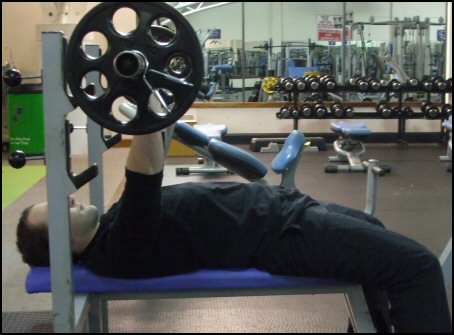The Final Problem with Static Contraction Training
By Paul "Batman" O'Brien
B.A., N.C.E.H.S., Dip. Acu., Cert Clin. IMed., Dip. Adv. OBB, Dip. CHM, Pn1, PN-SSR, PN-NCA, M.AFPA., M.C.Th.A.
The Final Problem with Static Contraction Training
In the first article in this series I introduced Static Contraction and explained how and why it may be used along with the first problem with the method - Structural weakness. In the second article I focused on the 2nd problem - compound movements and reduced intensity and now, following on that, the third issue -
Problem's with Static Contraction No.3 - Sub-maximum contractions
Contrary to the many published and claims Static contractions are SUB-MAXIMAL training, and will always be. With static contractions you can't place yourself in a maximally contracted position - you can come very close, but you still have to move the bar a few centimetres to an inch or so, thus even fractionally you aren't generating maximal stimulation because the initial position is marginally weaker and you are lifting a weight that isn't taxing you at 100%. If it was you wouldn't be able to lift it off the pins.
Bringing me neatly to my second point - the weight you lift in SCT is never the maximal weight you can lift - it's again very, very close, and perhaps so close as to make no difference, but it's not maximal - it can't be. Maximal stimulation is a momentary thing about 1 second, and in order to move it into position even those few centimetres you are sacrificing weight. Furthermore you cannot precisely get the weight you need - you may be 2 lbs or 0.2 lbs out depending on the weights available.
There are also issues with the time you are kept under tension. There are specific time's that MUST be adhered to in order to correctly target and stimulate the correct muscle fibres.
And speaking of fibres, we have The Final Problem with Static Contraction Training
The Final Problem with Static Contraction Training
Demonstrating Excellent Static Contraction technique on a Wide Grip Bench Press. This is a 320 lbs bench press performed when I weighed 160 lbs
It is impossible to use static contraction training methods if you can't isometrically contract a muscle in the first place and many don't. Hence while you may have a higher bench reading on day 3 of your training program, you've actually engaged a different series of contractions and the target muscle has had less actual stimulation. Like on the bench press. Most people don't actually know how to contract their chest muscles so when they bench they're using more triceps/shoulder strength then they should.
The Solution
For many years, before I founded Isometric-Training.com in fact, I was an advisor on a Static contraction training forum. In fact I was, and remain to this day, the ONLY person to EVER produce documented, photographic evidence of client success using static training methods.
The problem's most people had (aside from not getting results) were: injury, poor exercise selection and an inability to correctly contract a target muscle.
So how did I fix this?
Simple...as always...Isometrics. Learn Isometrics. Start with my Perfect Body program. I'll teach you complete sequential Isometric contractions. In just 7 weeks not only will you have carved and sculpted an exceptional physical body...but you'll have gained precise muscle control that will allow you to correctly target and isolate a given muscle.
With that ability you can then begin to test your development with more advanced techniques like Static Contraction.
Or is you want a more advanced approach you can move on to my advanced programs like Project Dragon in Isometric Mastery. Here I will teach you my 4 Phase protocol for applying Isometrics to Static Contractions creating a safe and remarkably effective method of muscle and strength development. Soon you'll be able to press over 4,000 lbs of weight in a leg press, like I can. ;-)
You can learn more about those programs - here.
Click here for Part 1 of this series









New! Comments
Have your say about what you just read! Leave me a comment in the box below.